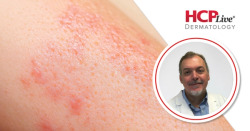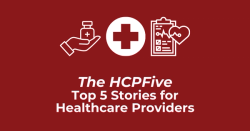
OR WAIT null SECS
Nurse-Led Gout Care Linked to Better Medication Adherence
Among the nurse-led cohort, 83% of patients with gout achieved target p-urate levels and 98% continued treatment with urate lowering therapy.
Using a targeted approach, nurse-led gout care was linked to a higher uptake of and adherence to urate lowering therapy (ULT) compared with usual care, according to a study published in Rheumatic & Musculoskeletal Diseases.1
“Currently, gout management, particularly ULT, is often suboptimal,” wrote a team of investigators led by Claus Rasmussen, MD, associated with the Department of Rheumatology, North Denmark Regional Hospital in Hjorring, Denmark. “Nurses successfully manage various diseases including gout. As gout prevalence is rising, and rheumatologists and general practitioners face shortages, a new approach is imperative.”
Despite the established recommendations for ULT, less than half of patients are prescribed ULT and treatment adherence is generally poor. Further, the doses are often fixed without titration, which hinders a patient’s ability to obtain target plasma urate (p-urate) concentrations.2
In the real-life prospective cohort study, investigators assessed the effectiveness of a nurse-led care program that used a treat-to-target strategy for the management of gout over a span of 2 years.
Patients with clinically confirmed gout diagnosed between June 2017 and June 2021 who were treated at the Clinic of Rheumatology in the North Denmark Regional Hospital were recruited into the study. The nurse-led management program provided a structured treatment plan including consultations, patient leaflets, laboratory monitoring, and telephone contacts. Patients were required to have had ≥ 1 visit or telephone call with the nurse-led clinic and nurses were given specialized training in gout management, with a focus on overcoming established barriers to treatment.
At the 1-year mark, patients were cared for in general practice for the remainder of the trial. The primary endpoint was obtaining target p-urate levels, defined as < .36 mmol/L, at 2 years. Other endpoints were treatment adherence and the achievement of target p-urate levels among specific subgroups. These results were compared with patients diagnosed with gout in the same clinic but receiving usual care.
A total of 114 patients with gout were recruited into the nurse-led group and 172 patients received usual care.
Among the nurse-led cohort, 82% (n = 92/112) achieved target p-urate levels and 98% continued treatment with ULT. Results were comparable among patient subgroups. Most (90%, n = 101/112) patients received allopurinol treatment with an average daily dosage of 308 mg. Conversely, only 44% (n = 63/144) of patients in the usual care group obtained target p-urate with insufficient doses of allopurinol (67%, n = 97/144), with a mean daily dosage of 235 mg. Additionally, fewer patients (73%) in this group continued ULT. The nurse-led care averaged 2 visits and 3 telephone calls over a 336-day period.
The overall mortality rate at the end of 2 years was 15%, with 4% (n = 4/114) in the nurse-led group compared with 23% (n = 39/172) in the usual care group (95% confidence interval [CI] .1547 [.04 — .43], P <.0001).
Investigators mentioned limitations including selection bias and a lack of alternative comparison groups. However, by examining and comparing the nurse-led and usual care groups, they were able to obtain valuable insights regarding treatment efficacy and could better understand potential trends and associations that may impact future research and clinical practice.
“Our study demonstrates that a low-cost nurse-led gout clinic, primarily based on telephone interventions for 1 year, can be highly successful in achieving a clinically relevant reduction in p-urate levels,” investigators concluded. “This reduction significantly decreases the risk of disease progression, complications and potentially even mortality rates.”
References
- Rasmussen C, Larsen JW, Christensen HM, et al. Optimising gout treatment: insights from a nurse-led cohort study. RMD Open. 2024;10(2):e004179. Published 2024 Apr 24. doi:10.1136/rmdopen-2024-004179
- Bavanendrakumar M, Robinson PC. Management of patients with gout and achievement of target serum Urate levels at a tertiary rheumatology service in Australia. Intern Med J 2020;50:337–41. doi:10.1111/imj.14445


